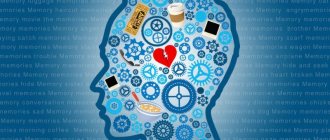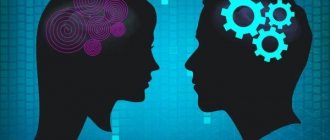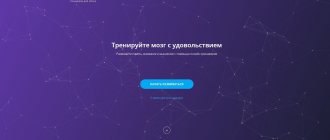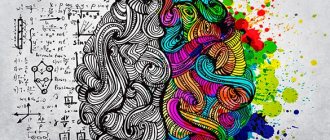Types and classification
Symptoms of agnosia vary significantly depending on the damaged area of the cerebral cortex. Most often, one type of perception is affected, but the disease can affect several systems simultaneously. There are several main types of agnosia:
- visual (visual);
- auditory;
- olfactory - impaired perception of smells;
- tactile - change in response to touch;
- taste;
- other specific varieties.
Specialists at the Clinical Brain Institute have extensive experience working with patients with agnosia. It is important to promptly determine the type of disorder and begin maintenance therapy. In addition, the first signs of the disease may indicate serious pathologies of nervous activity.
Visual agnosia
This type of agnosia is characterized by a violation of the perception of information that enters the brain through the visual analyzer. Its symptoms may differ for each patient, depending on the type and location of the damage. So, we can distinguish several specific varieties:
- object-based (develops when the left occipital lobe is damaged) - the patient sees objects well, but has difficulty recognizing them;
- prozolagnosia (damage to the lower occipital region on the right) - inability to recognize even familiar faces;
- color (damage in the left occipital region) - difficulty identifying colors and shades, as well as determining their relationship with certain objects;
- weakness of optical representations (symmetrical damage to the occipital-parietal lobe) - inability to determine the color, shape and size of objects, imagine and describe them;
- simultaneous (pathology of the occipital region) - the patient can concentrate on only one object;
- Balint's syndrome (damage to the occipito-parietal region) - inability to direct the gaze and focus on objects that are in different directions, as well as difficulty identifying objects at near and far distances.
With visual agnosia, the normal functioning of the other sense organs is maintained, and no eye diseases are detected. After rehabilitation at the Clinical Institute of the Brain, the patient adapts to everyday life and can compensate for visual disorders using other analyzer systems.
Optical and optical-spatial agnosias
Patients experience impaired ability to determine the distance between objects and navigate in space. In this category, several specific types of agnosia can be distinguished:
- Depth agnosia (damage to the middle part of the occipital-parietal lobe) - difficulty determining the distance to objects, especially those located in the anterior direction from the patient;
- impaired stereoscopic vision (pathology in the left hemisphere) - inability to recreate a three-dimensional image;
- unilateral (damage to the opposite parietal region) - one half of the space falls out of the field of vision;
- Topographical orientation disorder (parietal and occipital regions) - difficulty finding familiar objects, including home address and objects in one’s own home.
Memory and attention are preserved in optical-spatial agnosia. The patient will need help with everyday life and with new tasks, but proper rehabilitation will allow him to experience minimal discomfort in everyday life.
Auditory agnosia
With this type of agnosia, the functions of the auditory analyzer are preserved. The patient may experience various auditory perception disorders, including:
- simple - decreased ability to characterize and identify familiar sounds;
- auditory-speech - impaired speech recognition, recognition of simple and familiar words;
- tonal - lack of understanding of voice timbre, emotional coloring and other aspects.
All types of auditory agnosia develop when the temporal lobe of the brain is damaged. If the patient is unable to recognize speech, he experiences difficulties in everyday life, while his memory, attention, and the functions of the visual and other analyzers compensate for the impairment.
Somatoagnosia
Somatoagnosia is a disorder in which the patient is unable to identify and recognize parts of his own body. These are complex perception disorders associated with damage to various parts of the right hemisphere of the brain. There are two main types of somatoagnosia:
- Anosognosia is a condition in which the patient denies the presence of an illness. This may be ignoring paralysis of limbs, blindness, or speech disorders.
- Autotopagnosia is a disorder of the ability to recognize individual parts of the body. The patient experiences difficulty when asked to point to an arm, leg, or face; in some cases, there is a feeling of a change in the size of parts of the body. This group also includes somatic allosthesia, in which the patient experiences a feeling of an increase in the number of limbs.
Signs of somatoagnosia may occur in attacks. Thus, in some patients they are harbingers of an epileptic attack, and with proper treatment they are practically invisible and do not cause inconvenience in everyday life. However, they can persist permanently.
Impaired awareness of space and time
This type is considered the rarest and is associated with damage to the occipital lobe of the cerebral cortex. The patient has difficulty determining the passage of time, as well as the speed of movement of any objects. Separately, there is akinetopsia - impaired ability to identify moving objects.
Optical-spatial agnosia
Optical-spatial agnosia occurs when there is predominant damage to the superior parietal and parieto-occipital parts of the cortex of the left or right hemispheres of the brain, due to which the complex interaction of several analyzer systems (visual, auditory, tactile, vestibular) occurs.
Optical-spatial agnosia is especially severe in cases of symmetrical bilateral lesions.
Features of the functioning of the visual areas of the brain make it possible to recognize such spatial characteristics of visual images as size, distance, direction, and relative position of objects.
All these characteristics of objects are learned in ontogenesis due to associative connections between various modalities - tactile, auditory, visual.
In accordance with this A.R. Luria considered, for example, optical-spatial disorders as a defect in the synthesis of information from various modalities.
He also pointed out that they, as a rule, manifest themselves in many types of mental activity: motor, constructive, verbal-logical operations of speech, writing, counting.
Such disorders vary in form depending on the location of the lesion, and primarily on the side of the brain in which it is located.
During the period of mastering the relevant types of activity, the cause of such disorders can be not only lesions, but also various dysfunctions in the maturation of brain structures.
Left hemisphere (dominant) lesions or dysfunctions lead to disturbances in spatial orientation activity. They are characterized by insufficient discrete-logical analysis of optical-spatial objects
In these cases, the
- schematic ideas about the spatial relationships of objects of reality (inability to rotate a figure in space, orientate oneself in a geographical map, a clock, spatial games, etc.),
- various types of constructive activities, drawing
- body schemas (autotopagnosia),
- naming and understanding of words denoting spatial relationships, prepositions with spatial meaning - on, in, under, above, etc., adverbs such as far, on the side, below, etc., on the basis of which agrammatism often arises, characteristic of patients with semantic aphasia,
- identification and naming of fingers (finger agnosia),
- writing and reading (based on a defect in analytical-synthetic, simultaneous actions for sound-letter analysis of the composition of a word)
Right hemisphere (subdominant) lesions with opto-spatial agnosia and dysfunction are observed much more often than left hemisphere lesions. They cause a lack of holistic perception of the spatial situation.
- simultaneous agnosia, in which there is an inability to assess the meaning of a plot picture due to the fragmentation of the perception of the spatial situation, although recognition of individual objects, as a rule, remains intact;
- impaired recognition of a familiar spatial situation, inability to reproduce it from memory;
- a violation of the body diagram (autotopagnosia), when orientation in the arrangement of body parts is difficult because they are perceived as distorted in size, disproportionate.
This is especially pronounced on the contralateral (opposite) lesion - the left half of the body.
As a consequence of a violation of the body diagram and weakening of visual control, difficulties arise in constructing movement in space, i.e. apraktoagnosia, which consists of the disintegration of established everyday skills, for example, dressing (apraxia of dressing, the ability to draw, perform professional actions, etc.)
The most striking and characteristic symptom of optical-spatial disorders that occur when the right hemisphere of the brain is damaged is unilateral spatial agnosia.
With it, the phenomenon of ignoring the left half of space, as well as visual, auditory, and tactile stimuli emanating from the left half of space, appears.
Diagnostic methods
The Clinical Institute of the Brain has all the conditions for a full diagnosis of patients with agnosia. At the initial stage, it is important to determine exactly what difficulties the patient has with the perception of the environment. For this purpose, there are special tests, during which the patient is asked to describe objects, sounds, and point to parts of the body. After determining the type of disorder, it is important to conduct brain imaging using computed tomography or magnetic resonance imaging. This research method will detect neoplasms, heart attacks, vascular damage and other anomalies that can cause agnosia.
Treatment of agnosia
Treatment tactics are selected individually. The Clinical Brain Institute employs specialists with extensive experience in treating various types of agnosia. Only some cases require surgery - when tumors, aneurysms, abscesses and other structures are found that need to be removed. In other cases, treatment consists of compensating for lost functions and adapting the patient. For this purpose:
- classes with a speech therapist - special exercises strengthen neural connections and improve perception;
- occupational therapy;
- course of therapy with a neuropsychologist.
Doctors at the Clinical Institute of the Brain insist on full rehabilitation. It can last up to 10 months or more, but qualified medical care will significantly affect the patient’s well-being. Despite the fact that some changes in the structure of the cerebral cortex may be irreversible, it is possible to improve the patient’s quality of life and adapt it in everyday life.
Clinical Brain Institute Rating: 3/5 — 1 votes
Share article on social networks
Article:
The presented article is devoted to the development of optical-spatial concepts in preschool children 5-6 years old with ODD in speech therapy classes.
This problem is relevant because optical-spatial representations play a crucial role in the interaction of a person with the environment, being a necessary condition for a person’s orientation in it. The ability to perceive space and spatial concepts are not given to the child initially; they are the result of a complex and long process of ontogenetic development, in turn determining the formation of higher mental processes, writing, reading. Violations of optical-spatial concepts in children have a negative impact on speech and cognitive activity, and negatively affect the child’s learning process, especially on his mastery of spelling and correct writing skills. The role of spatial representation in the development of children’s speech is very great; spatial gnosis is one of the main mental processes that create the primary basis for the formation of children’s speech, the development of which is further improved by this mental process (L.S. Vygotsky, A.R. Luria, A. A. Lyublinskaya and others). In addition, the development of spatial gnosis underlies the formation of cognitive activity of preschoolers and is one of the main prerequisites for preparing them for school education.
The relationship between the development of speech and other mental processes in children was considered by L.S. Vygotsky, A.N. Leontyev, A.R. Luria, and others. Their works show that the basis for the development of speech is the clarification of real connections, relationships between objects and phenomena of the surrounding reality. By designating objects, signs, actions of objects, relationships between them with the help of words and their connections, children master language not only as a means of communication, but also as a tool of thinking.
Significant deviations in the development of optical-spatial concepts of preschoolers occur with various speech disorders, including such forms as erased dysarthria.
That is why there is a need for timely speech therapy diagnosis and correction of difficulties in spatial orientation, which will make it possible, to one degree or another, to bring the development of a child with erased dysarthria closer to the age norm.
Modern studies of spatial representations by neuropsychologists allow us to clarify the mechanism and possible difficulties taking into account the interaction of the hemispheres of the cerebral cortex (Akhutin). Because orientation in space, correct organization of action in space is a complex activity in which both the right and left hemispheres are involved.
According to our research, we found that in children with erased dysarthria, the development of optical-spatial concepts lags behind the norm. This lag is manifested in relation to all the functions we have studied: the ability to perform perceptual actions, spatial gnosis and praxis, orientation in one’s own body, in the surrounding space. Therefore, correction should cover all of the listed functions; the development of each of them should become a separate task of work carried out with preschoolers.
1.Game techniques aimed at developing orientation in one’s own body.
The formation of spatial representations is associated with the use of different systems of orientation in space (visible and imaginary). The basic most natural, ontogenetically earlier and fixed by all human experience system of orientation is the body diagram.
A basic exercise for the formation of spatial concepts is that each direction is associated (fixed) with a specific movement, for example: “forward”, “backward”, “up”, “right” and “left” - a simple step or a jump on two feet, step or jump with a turn in the appropriate direction; “down” - squat. Here the concepts of “further”, “closer”, etc. are fixed. First, the child performs the movement together with an adult, who explains each direction. In this way, support is created for the child for further manipulations with the external space. Next, there is a gradual “collapse” of movements, as well as a transition from joint to independent execution, a transition from external to internal plane.
1. Exercise: “Parts of the body.”
Goal: development of orientation in one’s own body, consolidation and clarification of the names of body parts.
Progress of the game: One of the players touches some part of his neighbor’s body, for example, his left hand. He says: “This is my left hand.” The person who starts the game agrees or refutes the neighbor’s answer. The game continues in a circle.
2. Exercise: “Identify by trace.”
Hand and foot prints are drawn on the piece of paper in different directions.
It is necessary to determine which hand or foot (left or right) this print is from.
3. Exercise: “Mirror”.
Goal: development of orientation in one’s own body, consolidation and clarification of the names of body parts.
Equipment: wall mirror
Progress of the game: the child and the speech therapist stand side by side facing the mirror and perform the same movements while pronouncing: “clap above your head”, “at the right ear”, “at the left ear”, “behind the back”, “under the chin”, etc. .d. 4.Exercise: “Confusion”
Goal: development of orientation in one’s own body, consolidation and clarification of the names of body parts, development of attention.
Progress of the game: the child stands opposite the speech therapist. The speech therapist deliberately shows the movements that are not the ones he calls. The child must perform the movement correctly.
2.Game techniques aimed at developing orientation in the surrounding space.
Orientation in space is an important stage in the development of spatial concepts. It is necessary to develop in the child an awareness of motor capabilities and expand the range of movements in different zones of space: lower, middle and upper. As a result of exercises, the child develops skills that become the basis for extensive voluntary action.
1. Exercise “What’s above, what’s below.”
Goal: developing the ability to determine the upper and lower directions.
Progress of the game: a tower is built from geometric bodies. The child is asked to identify and name what is above and what is below.
2. Exercise: “What is to the right (left) of me?”
Goal: developing the ability to determine directions relative to your body,
Progress of the game: the child is asked, without turning around, to list what is to the right (left) of him. After this, the child is turned and asked the question: “What is now to your right (left)?
3. Exercise: “Robot”
Goal: development of orientation in the surrounding space, understanding of space coordinates.
Progress of the game: the child portrays a robot that accurately and correctly carries out human commands: “One step forward, two steps to the right, jump up, three steps to the left, down (sit down), etc.”
4. Exercise: “Animals are photographed.”
Purpose: determining the position of objects relative to other objects.
Equipment: Animal toys, toy camera.
Progress of the game: The speech therapist-photographer, wanting to take a picture of the animals, is looking for a frame. His assistant, the child, needs to seat them: the fox is to the right of the hare, the bear is to the left of the mouse, etc.
5. Exercise: Funny pictures.
Purpose: determining the position of objects relative to other objects in the picture.
Equipment: story pictures.
Progress of the game: the child determines in the pictures which side each character is on relative to the others, which hand he is using, etc.
3.Game techniques aimed at developing orientation on a sheet of paper.
The next stage in the formation of spatial representations is the transition to orientation in two-dimensional space, i.e. on the plane of the sheet. At the first stages of work, the child is introduced to the horizontal and vertical arrangement of the sheet (landscape and book version), taught to determine the sides and corners of the sheet, the top - bottom, right and left coordinates of the sheet. Then, based on the formed ideas, the child is taught to place and name objects and drawings located on the sides and corners of the sheet. At the next stage, work is carried out in a checkered notebook - “Graphic dictations”. It is necessary to first teach the child to retreat the required number of cells from the edge of the notebook and from previous work, to skip the required number of cells.
Exercise 1: “Draw a line”
Goal: formation of spatial concepts through graphic dictations.
Equipment: paper, pencils.
Progress of the game: according to the instructions of the speech therapist, the child draws certain lines (straight, dotted, wavy, colored, etc.) in a certain direction from a given point, without lifting the pencil from the paper.
2 Exercise: “Graphic dictation.”
Goal: formation of spatial representations through
graphic dictations.
Equipment: sheet of squared paper, pencil.
Progress of the game: from a given point, according to the instructions of the speech therapist, the child draws lines in a given direction.
3. Exercise: “Color as I say.”
Goal: Mastering the concepts “Left side of the sheet - right side of the sheet.”
Progress of the game: Coloring or drawing according to instructions, for example: “Find the small triangle drawn on the left side of the sheet, color it red. Find the largest triangle among those drawn on the right side of the sheet. Color it with a green pencil. Connect the triangles with a yellow line.”
4. Exercise “Forest School” (L.S. Gorbachev)
Purpose: Modeling fairy tales
Equipment: each child has a sheet of paper and a house cut out of cardboard.
Progress of the game: “Guys, this house is not simple, it is fabulous. Forest animals will study there. Each of you has the same house. I'll tell you a story. Listen carefully and place the house in the place mentioned in the fairy tale.
Animals live in a dense forest. They have their own children. And the animals decided to build a forest school for them. They gathered at the edge of the forest and began to think about where to put it.
Lev suggested building in the lower left corner. The wolf wanted the school to be in the upper right corner. The fox insisted on building a school in the upper left corner, next to her hole. A squirrel intervened in the conversation. She said: “The school needs to be built in the clearing.” The animals listened to the squirrel’s advice and decided to build a school in a forest clearing in the middle of the forest.”
5. Exercise “Bird and Cat”
Equipment: each child has a piece of paper, a tree, a bird, a cat.
Progress of the game: the speech therapist invites the child to simulate a fairy-tale situation:
“There was a tree growing in the yard. A bird was sitting near a tree. Then the bird flew and sat on a tree above. The cat came. The cat wanted to catch the bird and climbed a tree. The bird flew down and sat under a tree. The cat remained on the tree.”
4. Game techniques aimed at developing spatial concepts based on perceptual action.
These exercises are a necessary stage in the development of optical-spatial concepts, by performing which the child can creatively manipulate various objects. In the future, constructing numbers and letters from mosaics, plasticine, wire, etc. Preparation for school will be carried out in a playful way.
1. Exercise: “Constructing objects from given parts.”
Goal: the formation of spatial representations by manipulating a variety of objects.
Equipment: cubes, puzzles, mosaics, cut-out pictures, etc.
Progress of the game: the child is given a sample of a whole image, and then asked to assemble the same one from parts.
2.Exercise:
Goal: development of spatial concepts based on perceptual action
Progress of the game: put together figures from sticks according to the pattern given in the picture;
Fold four parts into geometric shapes - a circle and a square. If you have difficulty, perform this task step by step:
A) Make a figure from two then three and four parts;
B) Fold a circle and a square according to the pattern of the drawing with the component parts dotted on it;
C) Fold figures by superimposing parts on a dotted drawing, followed by construction without a sample.
3. Exercise: “Find the shape in the object and fold the object.” Equipment: envelope with geometric shapes. Progress of the game: In front of the children are contour images of objects made up of geometric shapes. Each child has an envelope with geometric shapes. You need to assemble this object from geometric shapes.
4. Exercise: “The picture is broken.”
Children must put together the pictures cut into pieces.
5.Exercise: “Mailbox.”
A mailbox is a box with slots of different shapes. Children lower volumetric geometric bodies into the box, focusing on the shape of their base.
6. Exercise: “I am a designer.”
Goal: the formation of spatial representations by manipulating a variety of objects.
Equipment: matches, counting sticks.
Progress of the game: the child is invited to use matches, counting sticks, construct any object image or lay out a printed letter.
References
- Ananyev B.G., Rybalko E.F. Features of the perception of space - M., 1964. - 305 p.
- Akhutina T.V., Pylaeva N.M. Overcoming learning difficulties: a neuropsychological approach. - St. Petersburg: Peter, 2008. - 320 p.
- Vygotsky L.S. History of the development of higher mental functions // Psychology. – M.: EKSMO Publishing House – press, 2000. –P.511 – 745.
- Luria A.R. Fundamentals of neuropsychology. – M.: Moscow State University Publishing House, 1973, – 212 p.
- Lyublinskaya A.A. Essays on the mental development of a child. – M: Education, 1971. – 318 p.
- Semago. N.Ya. Modern approaches to the formation of spatial concepts in children as the basis for compensating for the difficulties of mastering the primary school curriculum. // Defectology, No. 1., 2000.
- Semenovich A.V., Umrikhin S.O. Spatial representations in deviant development. M., 1998









